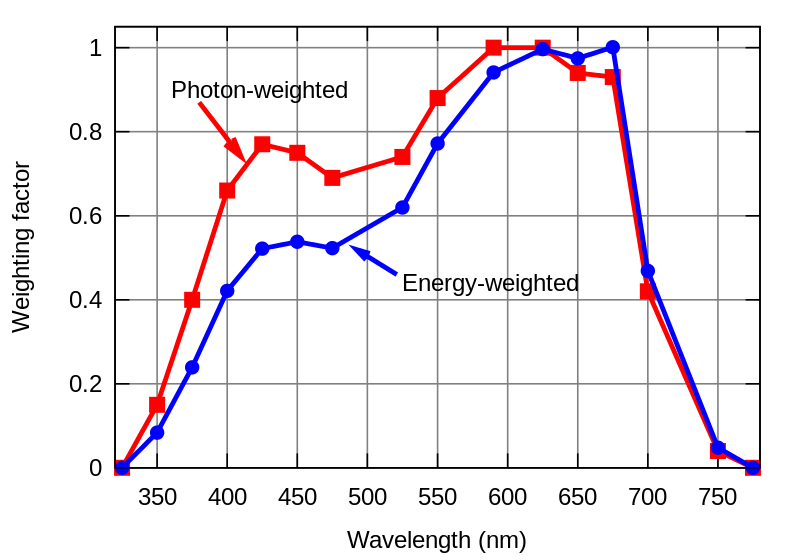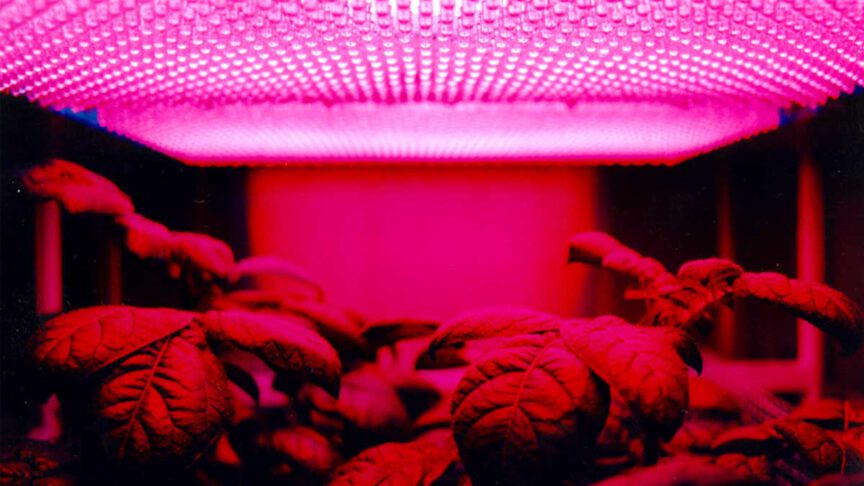Why you need Grow lights
Light from flashlights and other light sources is measured by picturing hundreds or millions of candles shining together. This is referred to as candle power. The light visible to our eyes, which is measured in nanometers (nm), ranges between 400nm to 700nm. Grow lights typically fall between the ranges of 450nm to 730nm.
Light is captured by plants during photosynthesis. Plants use green light for photosynthesis and reflection. Leaves are perceived as green because they reflect green light. Plants have varying requirements for light energy. Hydroponics lighting is very essential for indoor hydroponics. For plants to produce their food, they need light at the 450nm and 650nm levels. You need to provide your plants with the full spectrum of light in your hydroponics garden.
Some plants require you provide them with not more than 12 hours of light daily or the plant’s reproductive process will not occur. No reproductive process means no growth of seeds and fruits, and that in turn yields no profit for you. These plants, also known as short day plants, include onions, soya bean, violet, and a host of others.
Some other plants like lettuce, spinach, potatoes, and many others require as much as 18 hours of sunlight daily. The amount of light available to some plants, also known as Day Neutral Plants, has little or no effect on their growth and flowering stages. Cucumbers, corn, and tomato are good examples of Day Neutral plants.

What you should watch out for when choosing your hydroponics grow light
Your plant size and type largely determine the light requirements you will be fulfilling in your garden. You should provide your vegetables with at least 4 hours of direct sunlight and a max of 6 hours of direct sunlight with 10 hours of daylight.
Hydroponics bulbs are known to have a capacity between 400-600 watts. High intensity discharge (HID) bulbs is a common grow light for indoor hydroponics among hydroponics gardeners. HID bulbs are categorized into High Pressure Sodium (HPS) bulbs and Metal Halide (MH) Bulbs. Metal Halides are good for growing your vegetables.
Intensity of your light source is vital because your seedlings largely require bright light in substantial amounts. Absence of it causes growth to be long and naked. To control intensity, you can decide or monitor the wattage of your bulb, and also monitor the distance between the plants and the light source.
You should consider the life span of your light bulbs based on what you can afford and how long you need it to last. MH bulbs only need to be changed once in two years at least. However, they tend to be evidently less effective from the 15th month of usage.
For the fruiting stages, you should go for High Pressure Sodium bulbs. They, however, are more expensive than MH bulbs with each bulb lasting twice the lifespan of a MH Bulb. Also, HPS creates a great amount of heat which turns into wasted energy. The higher the intensity of your light source, the taller your plants will be. HPS and MH lights are the most similar artificial lights to sunlight. But they create high heat levels. If you have your setup outdoors, the heat buildup will naturally be taken care of.
Induction Fluorescents have long life spans. They emit low heat but they lack intensity. HID’s provide more wattage than Induction florescent. MH bulbs produce blue light which is best suited for leafy type plants like lettuce or vegetative plants like young peppers need blue light for growth, and the MH bulbs are a good source of blue light for leafy plants.
To provide the orange light required for the growth of your fruit trees, ornaments, flowering tomatoes and pepper, you should get HPS bulbs. New High Power LED lights have low heat output. LED lights have improved in performance compared to the first developed LED bulbs.
The duration of light seedlings take in should be considered. At this stage, you should provide your vegetables with about 16 to 18 hours daily and rest period of 8 hours daily.
The color of light matters as natural light is best for your seedlings that are just beginning to grow. Bulbs with full spectrum of light imitate natural light to a large extent. Red light help your plants increase in size, have longer stems and more flowers
The full spectrum florescent bulb can imitate 94% of the solar spectrum. Indoor plants grown best under full spectrum bulbs which can produce a balance of cool and warm light that replicates the natural solar spectrum.
HID lighting is quite strong and should be maintained at about 50cm away from the plants. Color of the grow light largely affects plant growth in indoor hydroponics. In the presence of blue light, your plants will likely be more compact with leaves that are thicker.
Adjusting your lighting depending on what you grow
During darkness, plants rest and convert their food into energy. With your perennials, you need to make sure light is available during their vegetative and flowering stages as they need light most during those periods, or there will be a drastic drop in the their growth and yields.
When you combine long day and short day plants, you will want to ensure that light available to the different classes of crops is suitable for each party. You should look into providing light for 13-14 hours on daily in a situation as this. To ensure your plants get the actual amount of light they need daily, you should get an electric timer to keep track.


Comments
Pingback: Why use a hydroponic grow tent indoors – Just Hydroponic